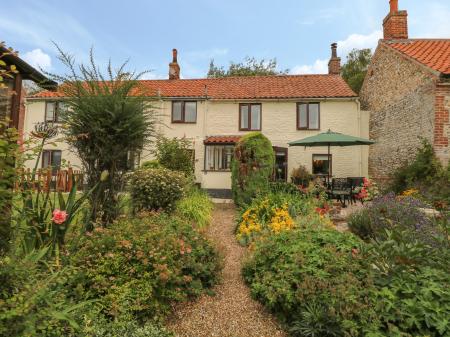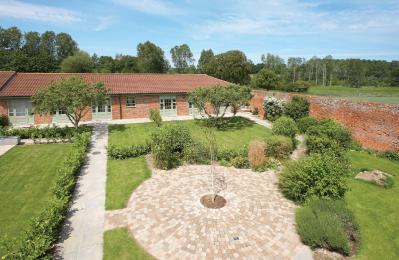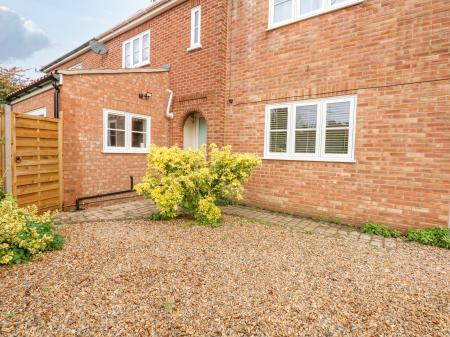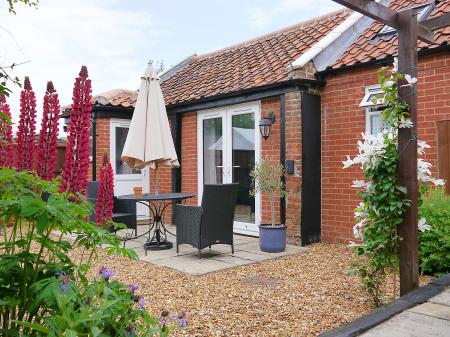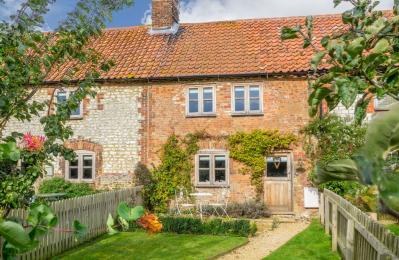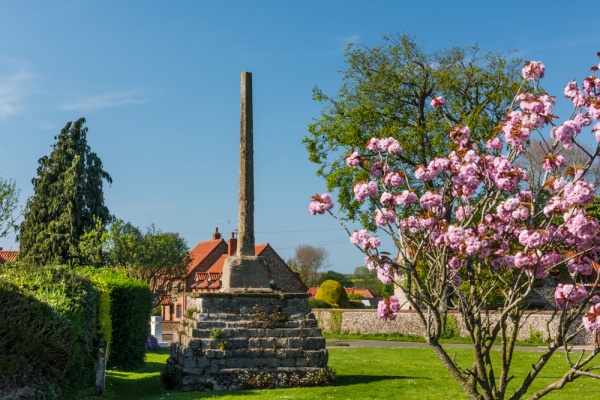
The plinth is 2 metres high and 3 metres square at the base. The socket stone, which makes up the lower part of the cross, is about 0.5 metres high. The tapering cross shaft is about 3.5 metres high (about 12 feet), starting out square at the bottom and becoming octagonal in section.
The cross marks the site of the annual Binham Fair, which was held every year from the 1100s until the 1950s. The cross was probably erected by the monks of Binham Priory after they were granted the right to hold a fair and a weekly market here by Henry I. A short distance from the market cross is Binham Priory, the remains of a wealthy medieval monastery. Part of the old priory church now serves as the Binham parish church.
Visiting
The cross isn't immediately obvious as you enter Binham, though the priory is well signed. Opposite the pub is a small, triangular green, which I took to be the village green, and there was no sign of a market cross. However, if you go up Back Street, away from the pub, past the petrol station, you come to the actual village green, which is considerably larger and more attractive. The market cross is close to the western edge of the green, wedged in near the back fences of several houses.
Though the cross shaft is essentially plain and unadorned, the stepped plinth is extremely high and very steep, and as a result, is quite eye-catching. Do spare a moment to look at the houses that ring the green; there are several extremely attractive historic buildings, many featuring pantile roofs.
NB. Binham Market Cross is sometimes known as Binham Wayside Cross.




 We've 'tagged' this attraction information to help you find related historic attractions and learn more about major time periods mentioned.
We've 'tagged' this attraction information to help you find related historic attractions and learn more about major time periods mentioned.